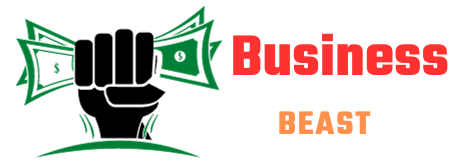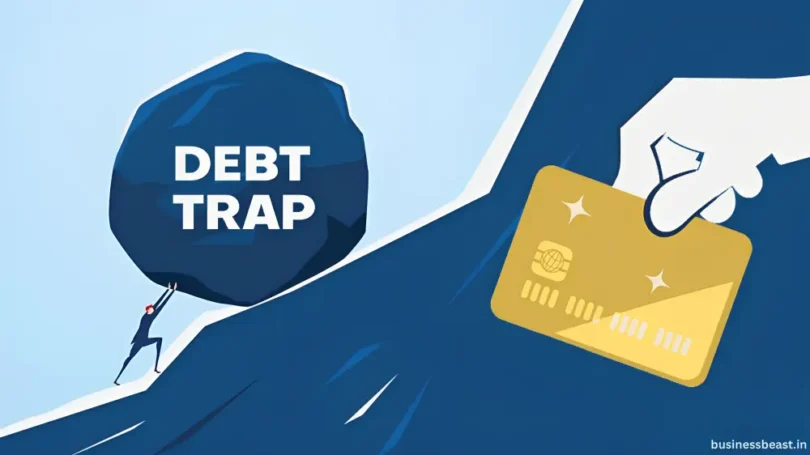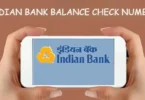The weight of debt is a widespread and intricate problem that millions of people experience globally. The phrase “debt trap” captures the vicious cycle that people—individuals, families, and even entire nations—face when they become entangled in a web of debt. This kind of situation frequently results from a variety of factors, such as financial mismanagement, unanticipated events, or economic downturns.
What is a Debt Trap?
When a borrower is forced to take out new loans in order to pay off previous ones, it can lead to a debt trap. A debt trap essentially occurs when an individual’s obligations to repay loans exceed their income. Payday loans are short-term loans with high-interest rates and fees; they could be one example of a debt trap. Repaying debts late might force borrowers to take out new loans, creating an impossible-to-get-out debt cycle.
How Does a Debt Trap Work?
Can you begin loan repayment as soon as your principal starts to decrease? However, you contribute to the principal and interest each month that you repay the loan. This indicates that your loan is meant to be paid back over a predetermined number of fixed installments and that each payment you make toward it applies to both the principal and the interest.
Causes of Debt Trap
- EMIs Exceed 50% of Your Income: Spending too much might put pressure on your finances and put you in debt. You run the risk of getting trapped in a debt trap if you start making rash purchases and fall for EMI plans or sales. As such, you should consider your financial situation before making an impulsive purchase.
- Fixed Expenses are More than Your Income: Product marketing these days is driving people to desire items they do not need. Furthermore, a plethora of financial institutions stand ready to offer you loans with as little paperwork as possible. People can easily spend more than they make because of this. Another indicator that you are in a debt trap is if your fixed costs exceed your income. Such a scenario could arise from taking out multiple loans at once.
- Exhausting Credit Limit: The simplest way to fall into a debt trap is through credit card debt, as most people are drawn in by the alluring offers and end up with endless credit card debt. However, credit card companies impose high-interest rates, which can vary from 16 to 32 percent annually.
- Multiple Loans: You may be living on less money if you are managing several credit card bills and personal loans. Taking out a single low-interest personal loan and combining all of your debts under one roof could be a wise move in this scenario. It will guarantee both peace of mind and prompt loan repayment. However, it might not be a good idea to take out successive loans in order to pay off your debts.
- No Repayment Plan: Although credit cards and loans may appear alluring, you must first plan your repayment before deciding to use them. Prior to applying for a loan, you should estimate your estimated monthly installments (EMI) using an EMI calculator to help you better plan your repayment plan.
How to Avoid a Debt Trap
- Build an Emergency Fund: Having an emergency fund with money in it could help you stay out of debt. Your emergency fund can be used to pay for unforeseen veterinary bills or ongoing living expenses following a layoff. Your monthly expenses and income will determine how much you keep in your fund. It is ideal to have enough money in your fund to pay for rent, groceries, utilities, car payments, and other living expenses for at least three to six months.
- Avoid High-Interest Debt: You might use high-interest credit cards, payday loans, title loans, or cash advances to get by if you don’t have an emergency fund. Unfortunately, if you only make the minimum payment on debt with high-interest rates, it can grow quickly. For example, if you have a $2,500 credit card balance with a 20% interest rate and you only pay a minimum of $50 each month, it may take up to 106 months (or more than eight years) to pay off the initial $2,500 balance, and you will ultimately pay more than $2,750 in interest. Interest can reduce your disposable income and increase the difficulty of paying your bills on time each month.
- Automate Your EMIs and Utilities Bills: You can give permission for a bank or other relevant organization to automate the payment of your utility bills and EMI. These are significant bills that must always be paid on time. The issue might be resolved if a system were to automatically collect payment for these bills.
- Insurance Policy to Protect You: Obtain adequate insurance to protect you and your loved ones from unforeseen circumstances. You can use all of your savings toward paying off your debt if you have insurance, as you won’t have to worry about rising medical expenses.








Leave a Comment